"I'd like to thank our competitors for challenging us to continually raise the bar in product innovation," said MicroStrain president Steven Arms as he accepted his company's latest Best of Sensors Expo award during the June 2005 show.
 |
Arms's comment illustrates the spirit of the Best of Sensors Expo awards. With the awards, the editors of Sensors seek to honor those products we feel embody the most useful innovations, and will have the greatest impact on sensor-based design in the future. Evaluating the nominations can be a bit agonizing, and often we've been tempted to give awards to products we think are just terrific (see this month's editorial column)—even if they don't strictly adhere to our judging criteria (see the sidebar "Here's the Program"). But of course the criteria are critical to the process, and we rely on them to keep us on task.
MicroStrain's 2005 award-winning product exemplifies one of the themes evident in product launches at this year's event: Inertial measurement units, or IMUs (systems that detect altitude and motion by integrating accelerometers and angular rate sensors/gyros, and sometimes magnetometers). Another trend among this year's award winners: Ease of use, exemplified in particular by Sensor Synergy's NEEM-112, which makes it simple to connect conventional sensors to the Internet. Which brings to mind another theme in the awards: Wireless data communication (yes, still hot as ever!). Now, for details on the individual winners . . .
GOLD WINNERS
The sole winner in the category Sensor Components is Analog Devices' (www.analog.com) AD7745 capacitance-to-digital converter, an elegant, high-resolution ΣΔ converter that accepts direct capacitance inputs. What a handy thing! We chose the product mainly for this practicality aspect, but we also appreciate its astonishing resolution— 20 aF.
 |
In the Sensors category there were two gold winners. Being a huge fan of energy harvesting schemes, I was captured by EnOcean's (www.enocean.com) STM 100, a wireless sensor module featuring a small solar cell for battery-free operation. Oh, so it requires a light source, you ask? Well, only an occasional one (and here's the beauty of the design): An integrated energy store enables the STM 100 to operate in total darkness for several days. Brilliant!
 |
The Segway personal transport system put a spotlight on IMUs a few years back, and today there are many to choose from. Senior editor Melanie Martella admits to being completely captivated by their powers—and especially by MicroStrain's (www.microstrain.com) Inertia-Link, which combines three orthogonal gyroscopes, three orthogonal accelerometers, an embedded processor, and a data logger with an RF receiver. Using complex algorithms, the device can provide an interpolated yaw reading from the gyro and accelerometer signals. All that makes it very snazzy, but here's the icing on the cake: Inertia-Link's support of so many communication protocols makes it all the more versatile. Among its repertoire: IEEE 802.15.4 (ZigBee), USB, RS-232/RS-485, and CAN bus.
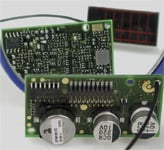 The STM 100 from EnOcean. |
SILVER WINNERS
Two other IMU products (also in the Sensors category) took silver Best of Sensors Expo awards. First is Crossbow Technologies' (www.xbow.com) μNAV, a digital sensor and servo control board for miniature ground and air robotic vehicles. The unit combines accelerometers, angular rate sensors, and a magnetometer to create an IMU, and adds static and dynamic pressure sensors for altitude and airspeed measurements, as well as a GPS for location. A highly capable system.
 Crossbow's µNAV |
If a small IMU is what you're after, you'll want to check out MEMSense's (www.memsense.com) MAG 3 , which measures 0.7 by 0.7 by 0.4 in. It combines a triaxial accelerometer, triaxial angular rate sensor, and magnetometer, which allows for raw analog signal use in inertial design.
 MAG3 from MEMSense |
Also in the Sensors category is a different type of product: FISO Technologies' (www.fiso.com) FOP-MA, a miniature fiber-optic acoustic pressure sensor that uses white-light interferometry to measure the deflection of a silicon diaphragm. Designed for acoustic and microphone applications, it is intrinsically safe, immune to EMI, and measures from 0–2 psi all the way down to 0.0075 psi resolution.
 FISOTechnologies' FOP-MA |
We gave two silver awards in the Communications and Networking category. The claim to fame of Dust Networks' (www.dustnetworks.com) SmartMesh networking platform is reliability over long periods of time. SmartMesh combines software and very low power wireless nodes to form proprietary-protocol mesh networks of particular benefit in building automation, industrial monitoring, and defense applications.
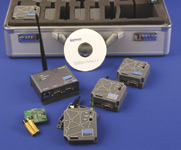 SmartMesh from Dust Networks |
Ember's (www.ember.com) EM250 802.15.4/ZigBee compliant system, a chip that integrates a programmable microprocessor, RF radio, network protocol stack, and memory, is geared to help engineers build and develop ZigBee-based products and applications.
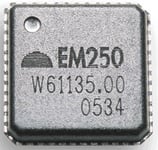 The EM250 from Ember |
BRONZE WINNERS
Continuing in the category Communications and Networking, we were pleased to recognize Sensor Synergy's (www.sensorsynergy.com) NEEM-112, which lets you quickly connect conventional sensors to the Internet in <30 minutes. By using direct sensor interface technology, you can take advantage of electronic data sheets, correction engines, and network-enabled data views.
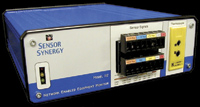 NEEM-112 from Sensor Synergy |
In the category Data Acquisition, we honored National Instruments' (www.ni.com) CompactRIO embedded DA and control platform. The small-footprint system uses a reconfigurable FPGA, allowing you to implement multiloop analog PID and digital control systems for real-time control. The system runs LabVIEW code, in order to increase ease of use.
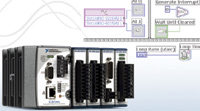 CompactRIO from National Instruments. |
Another Data Acquisition category winner was the EL-USB-2 Easy Log temperature and humidity logger from Lascar (www.lascarelectronics.com). What makes this so handy is its direct USB interface; you can quickly and conveniently plug the device into the USB port on a PC, configure it and plug it back into the PC to download data. Really, it's a sensor-enhanced USB flash drive. Handy!
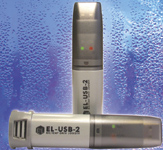 Lascar's EL-USB-2 |
Behind the Products
The Best of Sensors Expo awards are all about products. But of course there are people behind the products—engineers and support staff who pour their hearts and souls into creating the best devices they can to empower your own designs.
 Eamonn Dillon holds the Best of Sensors Expo Gold award that his team at Analog Devices won. With him are Kate Dobson, VP of Questex Media Group's technology division (left), and Stephanie Henkel, Executive Editor of Sensors. |
One of the joys of presenting the awards is, during the awards ceremony at Sensors Expo, welcoming to the stage people key to developing the winning products. Sometimes the folks who accept the award are presidents of companies, sometimes they are product managers, and sometimes they are the engineers who designed and built the products. No matter who they are, they thank us for giving them an award—but we feel so privileged to honor their creative work, for making such innovative and inspiring products for us to recognize.
For Analog Devices' Gold-winning AD7745 capacitance-to-digital converter, it was the young engineer Eamonn Dillon, visiting from Limerick, Ireland, who accepted the Best of Sensors Expo award on behalf of his company at the awards reception on June 7. Eamonn was the picture of engineering enthusiasm—a bright, friendly young man who was excited to be part of this engineering community, and proud of his winning team.
And so it stunned and saddened us to learn that following the show, while still in Chicago, Eamonn was killed by an automobile driver allegedly (according to a Chicago newspaper) under the influence of alcohol. Eamonn was only 24, but in his short time at Analog Devices he became a respected member of the capacitance-to-digital converter product-development team, according to his supervisor, Brian O'Mara. As an applications engineer, he most recently designed a liquid level sensing system based on the AD7745, which he presented at Sensors Expo.
Eamonn's passing inspired me to consider the impact of young engineers on the future of sensor technology. And so, in his honor, we will launch a new award, the Sensors Engineer of the Year award. Each year we will recognize an individual whose engineering work furthers the relevance and impact of sensors for the future.
Meanwhile, in solidarity with Eamonn's family, friends, and colleagues at Analog Devices, the staffs of Sensors and Sensors Expo have made a memorial contribution to a campaign whose goal is to eliminate drunk-driving tragedies. We encourage you to do the same.
Here's The Program
The Best of Sensors Expo awards are given by the editors of Sensors. We ask vendors to nominate their own products, explaining why they are important. Then we decipher the implications of the releases.
Determining the implications is, in fact, a major factor in our deliberations. When we look at the nominations we ask ourselves about potential impact (that is, whether the product has the potential to change the way people work) as well as whether it serves a real need. Other criteria we use for judging are:
- 1. Timeliness and availability. The product must be new to the market since last year's Sensors Expo, available for purchase by June 9, 2005, and publicly viewable at the show.
- 2. Distinctiveness. The product must be unique or at least appreciably different from other items on the market.
We weigh all these factors and then determine the level of the award—gold, silver, or bronze. The editors manage the judging with help from advisory board members and independent experts. This year we'd like to thank Ed Ramsden and Strether Smith for their expertise and assistance.